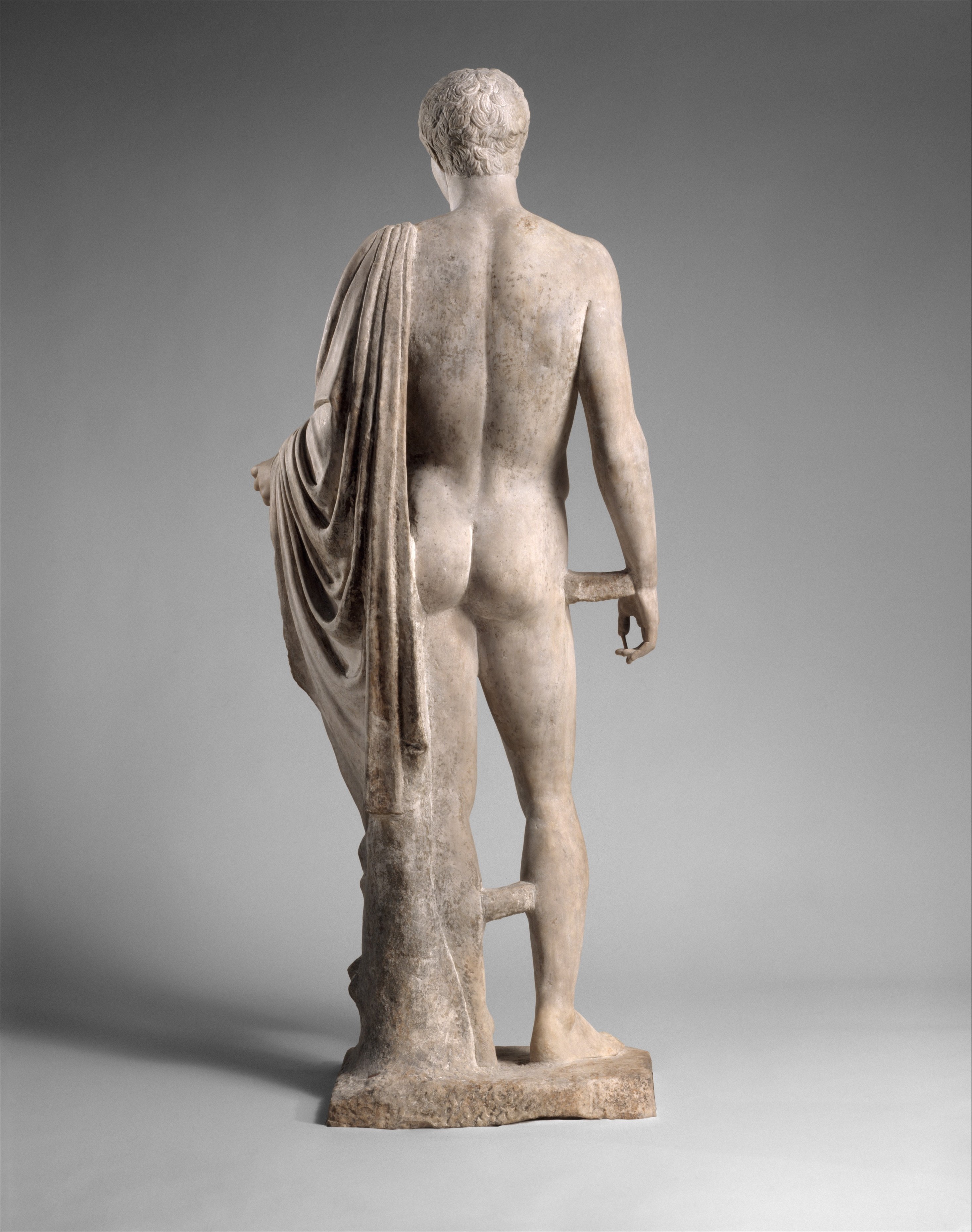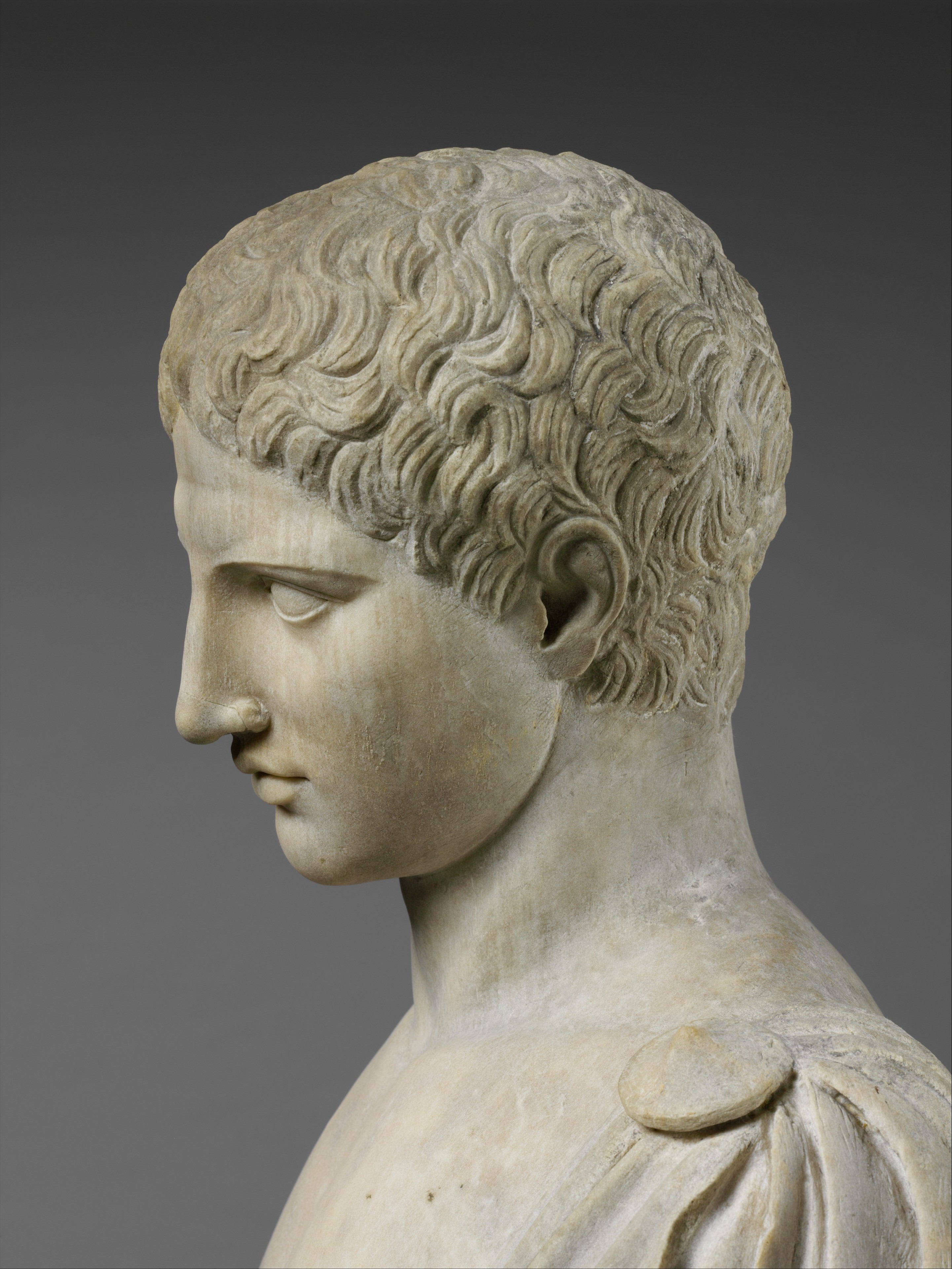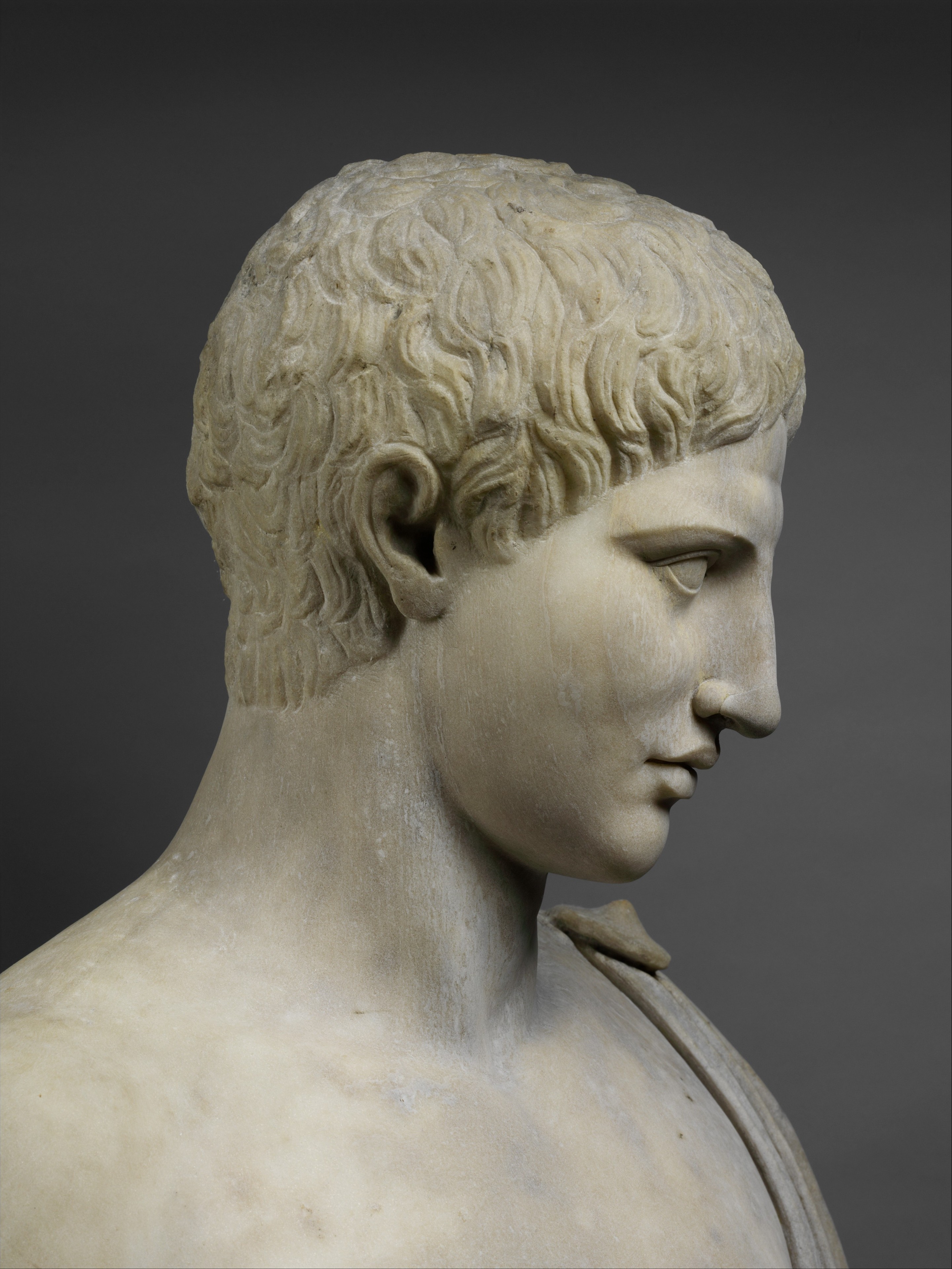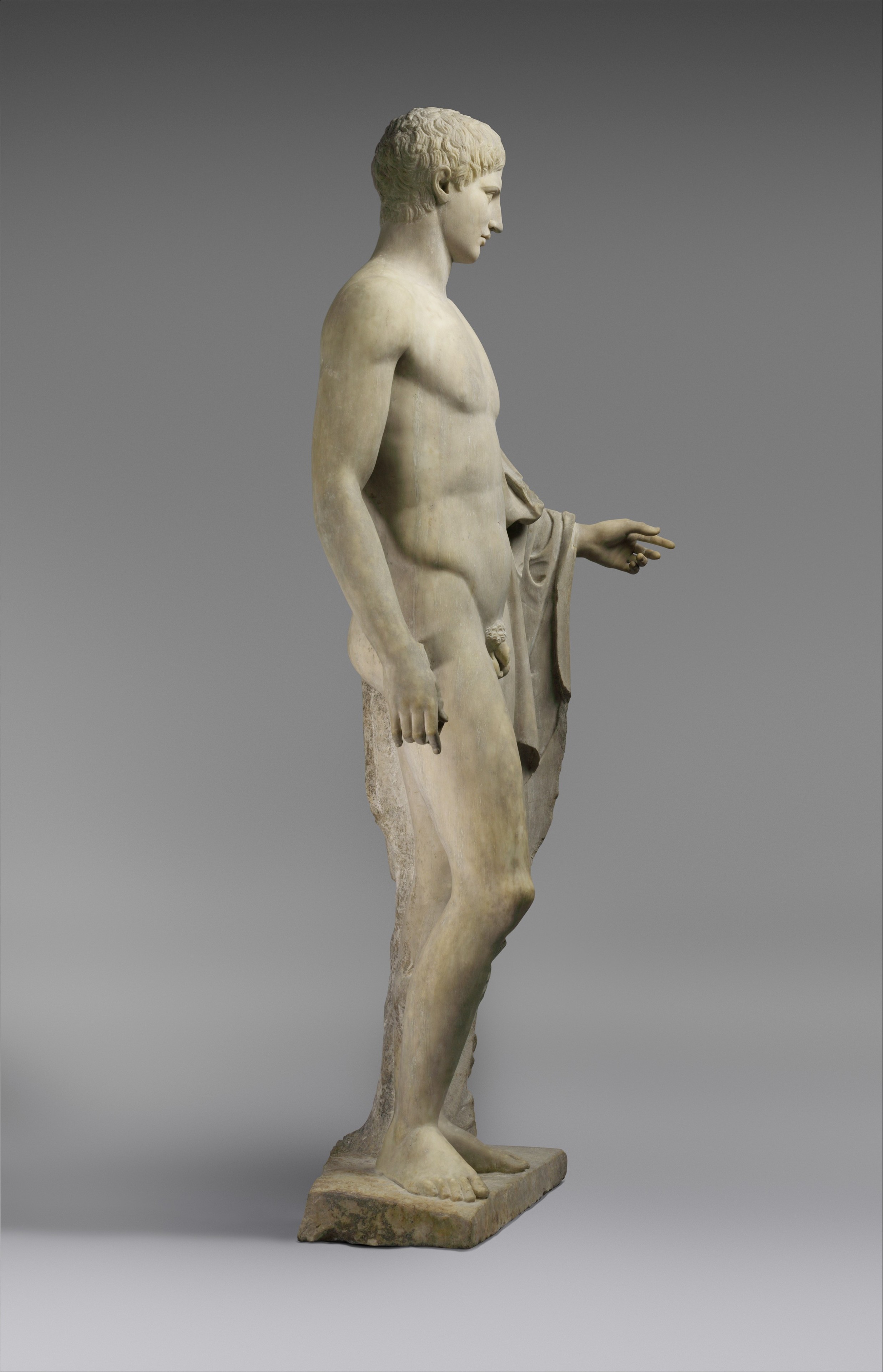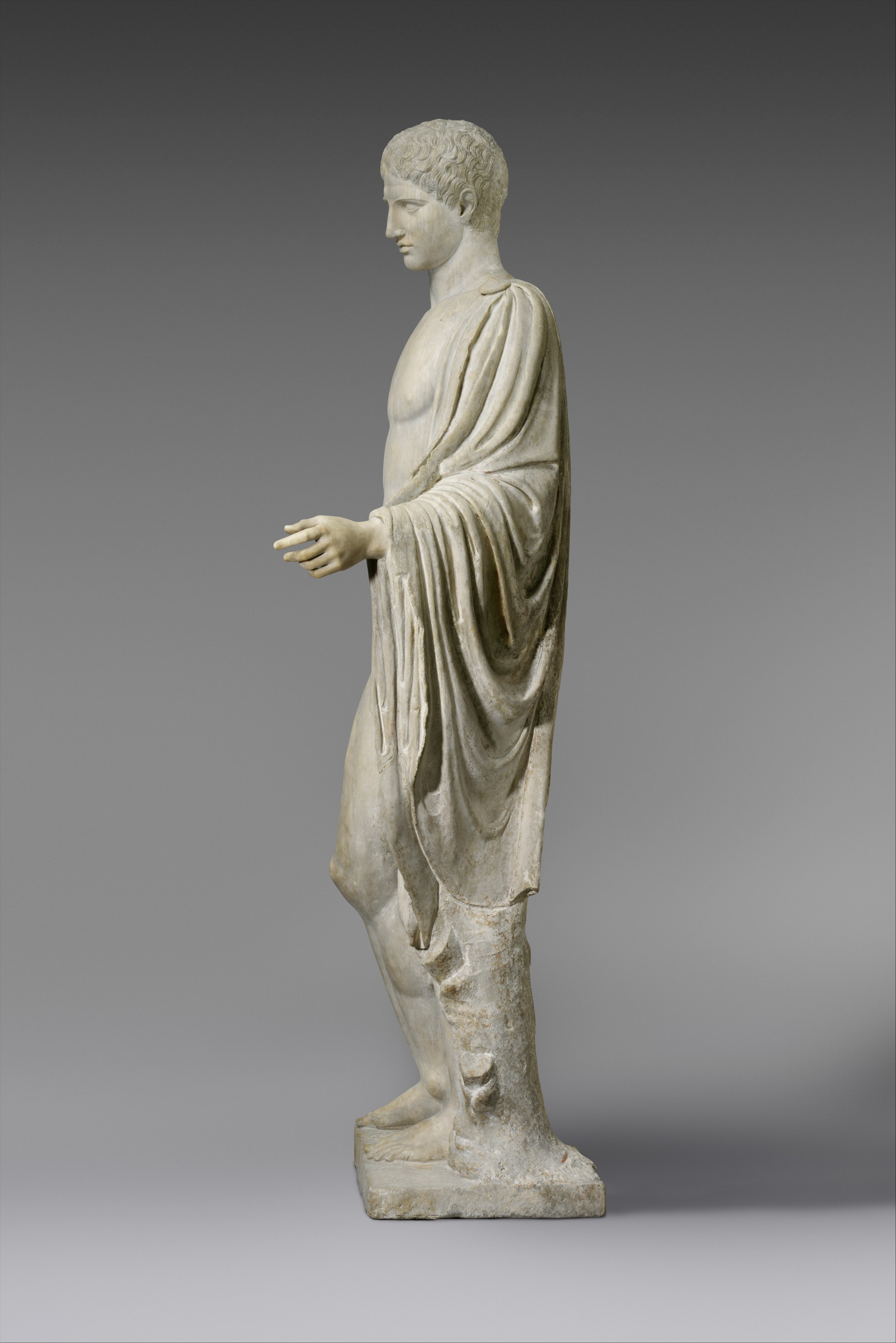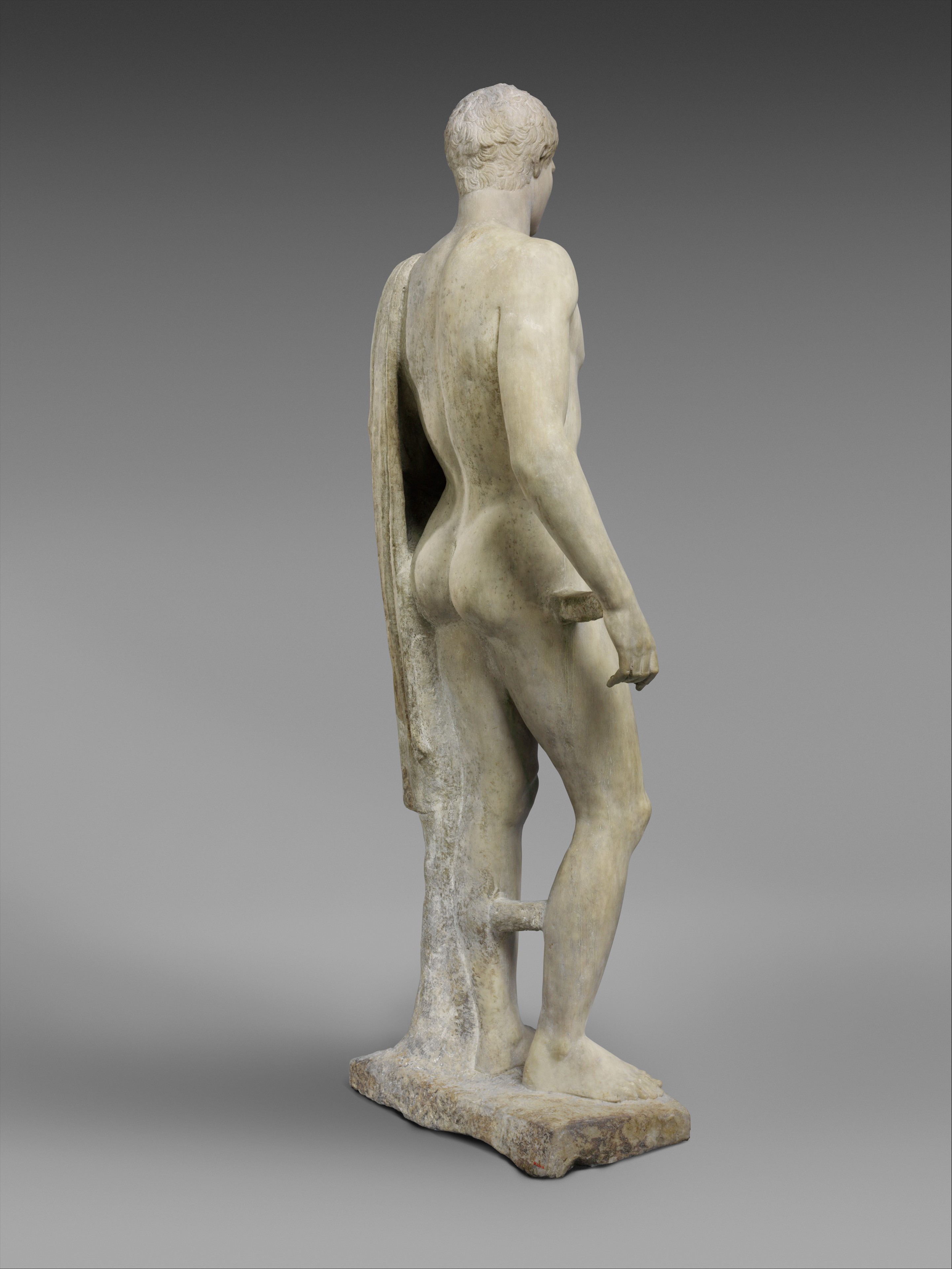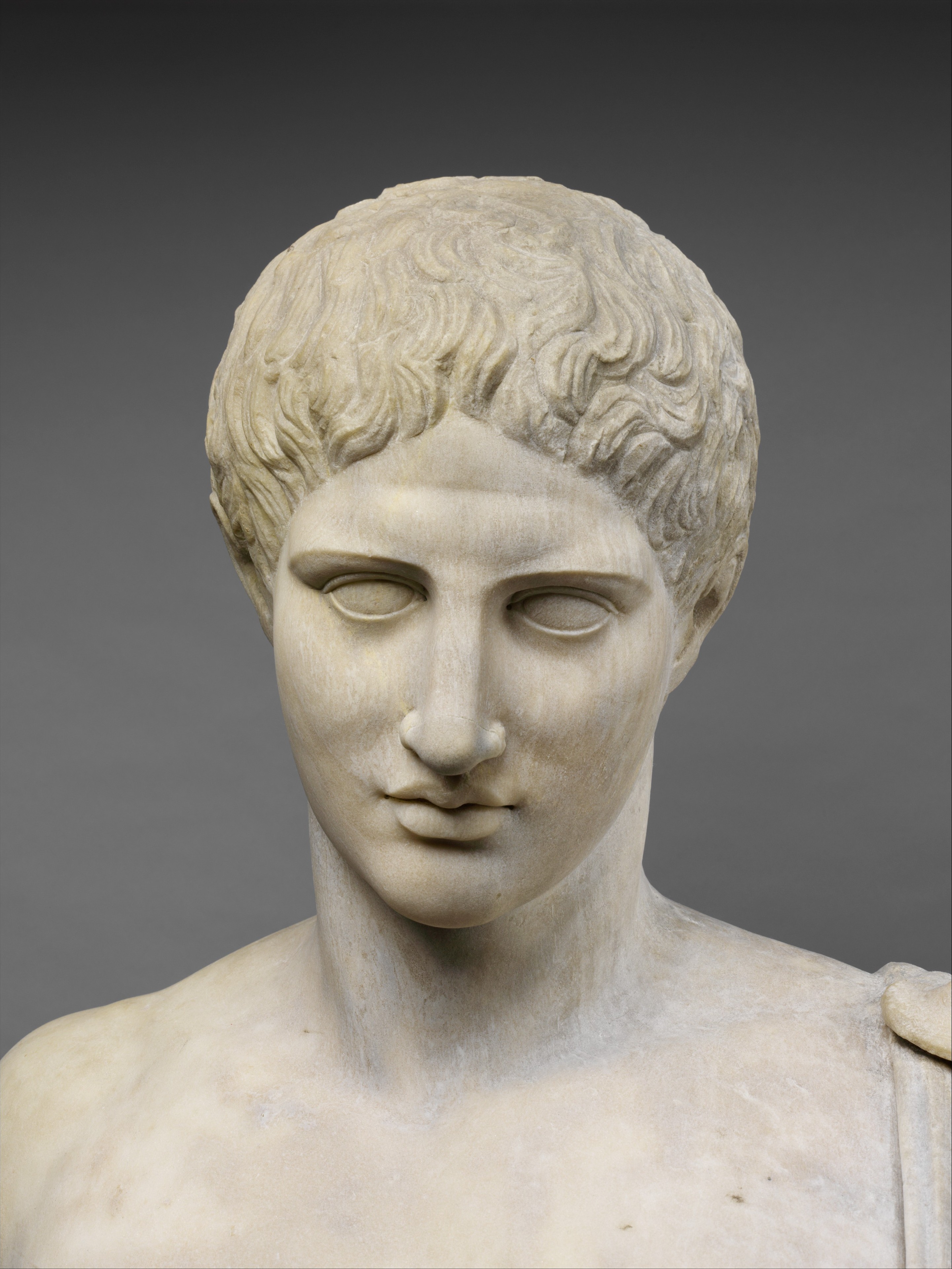Marble statue of Hermes
Copy of work attributed to Polykleitos
Roman after Classical Greek original. Copy or adaptation of a Greek statue of the late 5th or early 4th century B.C.
The statue is almost intact, although the surface was strongly cleaned as was the custom in the eighteenth century. During that period, newly excavated ancient
sculpture was cleaned and restored in Roman workshops before being sold to members of the European nobility. This work was acquired by the English statesman William Fitzmaurice, second earl of Shelburne, who assembled a
distinguished collection of antiquities at Lansdowne House in London. The statue of Hermes once stood in a niche in the dining room at Lansdowne House, serving the same decorative function that it doubtless once served in a Roman villa of the first or second century A.D. The dining room, designed by Robert Adam, is now at the Metropolitan Museum, where it is installed with other period rooms from England.
Due to rights restrictions, this image cannot be enlarged, viewed at full screen, or downloaded.
This artwork is meant to be viewed from right to left. Scroll left to view more.



